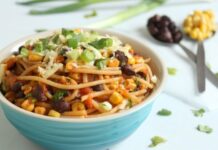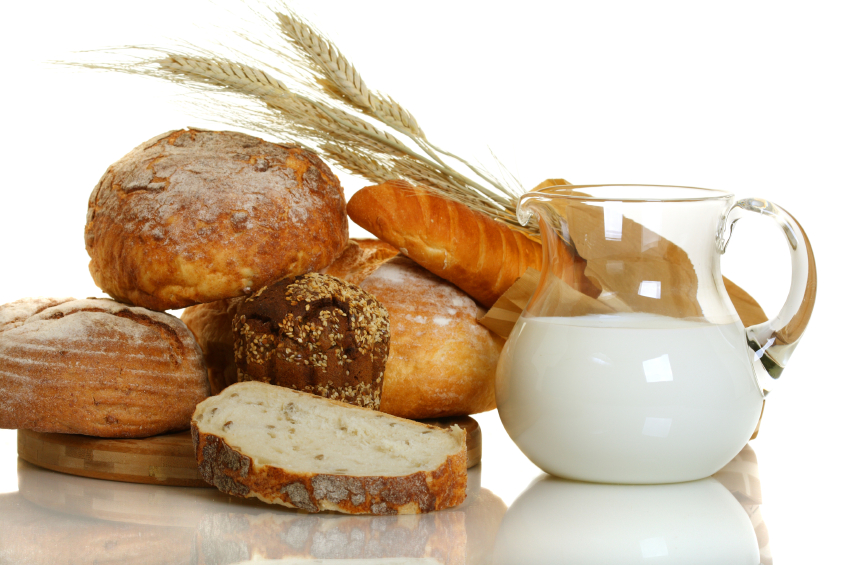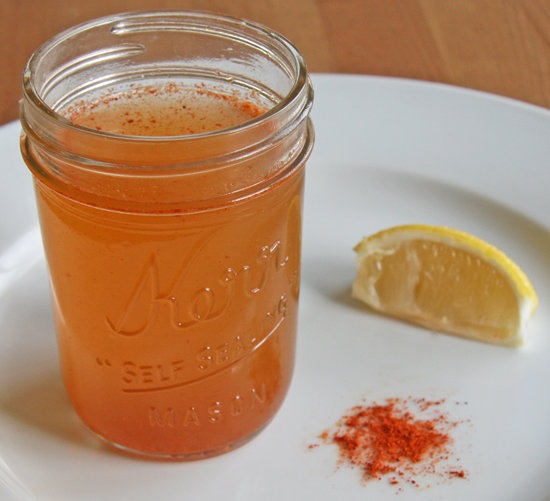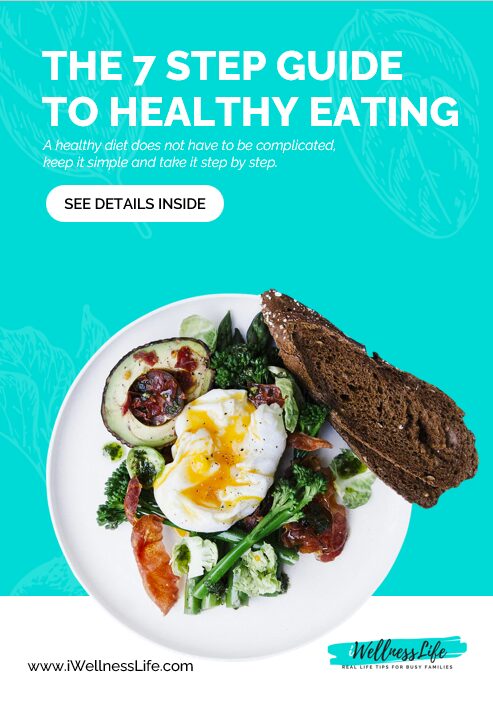Tips on avoiding gluten and lactose, and meal suggestions:
- Avoid cereals, breads or other grain products that include wheat, rye, barley or oats. This includes white or whole-wheat flour (including cookies, crackers, cakes and most other baked goods), semolina, couscous, bread crumbs, most pastas and malt.
- Avoid processed cheese, cheese mixes, low-fat or fat-free cottage cheese or sour cream.
- Avoid any dairy products, such as yogurt or ice cream, which contain fillers or additives.
- Avoid canned soups or soup mixes.
- Avoid creamed vegetables.
- Avoid products that contain modified food starch, food starch, hydrolyzed vegetable protein, stabilizers or fat replacers or substitutes.
- Avoid prepared or processed meats.
- Avoid beer, gin, and whiskey.
- Avoid flavoured coffee, malted milk, or herbal tea with malted barley.
- Look for products marked “gluten-free.” As more attention is being given to this disease, more products are becoming available. (a great selection of cereal, breads and crackers are now gluten free in health food sections of grocery store)
- Foods that do not contain gluten include products made with soybean or tapioca flours, rice, corn, buckwheat, or potatoes. Other gluten-free foods include nuts; fresh fish, meat or poultry; fresh, frozen or canned vegetables without sauces; wine; and plain, natural cheeses and yogurt.
- Current evidence suggests up to 2 ounces of oats each day may be tolerated well by people with celiac disease.
There are two main ways to treat lactose intolerance:
- Reduce the amount of lactose you eat, by limiting milk and dairy products
- Take commercially available enzyme substitutes
People with lactose intolerance need to read labels of all prepared foods to these if they contain lactose. The highest concentrations are found in ice cream and milk. Cheeses typically have lower amounts of lactose. Some products listed as non-dairy, such as powdered coffee creamer and whipped toppings, may contain lactose if they contain ingredients that are derived from milk. When you read food labels, look for words such as whey, curds, milk by-products, dry milk solids, and non-fat dry milk powder. If any of these ingredients are on the label, the product probably contains lactose.
If you completely avoid lactose, your symptoms should go away. If they do not, the diagnosis might not be correct. Many people will be able to tolerate a gradual increase in lactose intake if they are careful to monitor their symptoms. Doctors often recommend ice cream for this. It tends to be tolerated better than other foods that contain lactose because of its high fat content. As you gradually increase your lactose levels, review your diet with your doctor or a nutritionist to be sure that you are eating the proper proportions of fat, protein and other nutrients.
There are several commercially available enzyme formulations (tablets and liquids) that can serve as lactase replacements. You can add these to foods that contain lactose to reduce symptoms significantly. However, these products rarely get rid of symptoms completely, and the results vary among people and with different product formulations. Pretreated dairy products are an extremely effective alternative. You can add enzyme drops to milk and then refrigerate the milk for 24 hours before use or you can purchase dairy products that have been treated to reduce the lactose (“lactose-free” milk). Note that acidophilus milk still has too much lactose to be useful for most people with lactose intolerance.
Many people with lactose intolerance have a difficult time getting enough calcium in their diet. This increases the risk of osteoporosis, a condition in which bones become thin and fragile. Studies have shown that people who are lactose intolerant have double the risk of fractures. Therefore, it is essential that you consume at least 1,000 milligrams of calcium each day (1,200 milligrams if you are a postmenopausal woman) and get adequate vitamin D. Most people with lactose intolerance are able to tolerate live culture yogurt, one good source of calcium. Vegetables such as broccoli, Chinese cabbage, collard greens and kale are also excellent sources of calcium. If you are not able to get enough calcium in your diet, take a daily calcium supplement.
MEAL OPTIONS
Breakfast
- Smoothie with lactose free whey protein, mixed berries and water, almond or goat milk
- 1 egg 3 egg white scrambled on Ezekiel (gluten free bread) salsa to top it off
- Any fruit and nuts
- Gluten free high fiber cereal with almond or goat milk to wet
- Gluten free pancakes (use gluten free pancake mix, add egg whites, nut butter, whey protein)
- Egg white omelette with vegetables
Snacks
- Handful of nuts
- Nuts and fruit
- Raw vegetables with your favourite low fat dip
- Can of tuna or salmon with mustard
- Spinach warps (use lean meat tuna or salman, vegetables, mustard wrapped in large spinach leaves. This is the worlds ultimate sandwich
- Bowl of gluten free cereal with milk substitute (goat or almond)
- Gluten free high fibre crackers and humus
- Trail mix
Lunch and supper
- Gluten free high fiber sandwiches (avoid processed meats) use tin tuna, salmon, real turkey or chicken breast, lots of vegetables, mustard
- Green salad with vegetables and protein (olive oil and vinaigrette as dressing)
- Portion of lean protein, side of vegetables and mixed beans
- When cooking fun foods use gluten / lactose free ingredients instead of breads and milk and butter (grocery stores have pretty much everything gluten free these days from pizza crust, bread, milk, butter etc)
- People with gluten intolerance can eat rice, soy, amaranth, quinoa, potato, sweet potato or bean flour instead of wheat flour. This allows individuals to have a portion of starch with their meals as well as bake their favourite treats

Subscribe To Our VIP Newsletter
Join our VIP mailing list to receive additional content that goes even deeper into the latest tips to ensure you and your families health, fitness and wellness.























